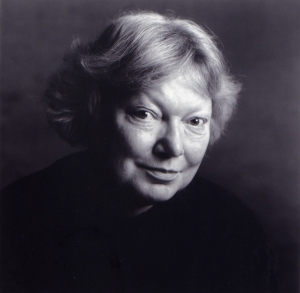Iris Cushing asks Inger Christensen’s translator about process, affinity and language on the 50th anniversary of Christensen’s literary debut (her first book, Light, just published in English by New Directions last year, came out in 1962).
Inger Christensen & Susanna Nied.
In the spring of 2011, I happened upon Inger Christensen’s alphabet, a slim New Directions paperback, and came under the spell of its exquisite structure almost immediately. I couldn’t fathom why I hadn’t heard of the poem before. The fact that it and Christensen were (and are) almost entirely unknown in the United States stuck me as a loss, but also gave the book the quality of found treasure—a jewel hidden in the vast avalanche of contemporary poetry. The beauty, fragility and moral courage of the poem sparked my curiosity about poetry in translation in a way nothing else had before.
Christensen, considered among the major European experimental poets and writers of her generation, was born in 1935 and raised on the east coast of Denmark’s Jutland peninsula. She later moved to Copenhagen, and then to Århus, where she earned her teaching certificate before going on to teach at the College for Arts in Holbæk. She authored several books of poems, including IT, Butterfly Valley: A Requiem, and alphabet, as well as novels, essays, plays and children’s books. Often mentioned as a candidate for the Nobel Prize in Literature, Christensen received numerous international awards, including the Swedish Academy Nordic Prize. Her work, which has been translated into over twenty languages, engages ecology, phenomenology and politics without ever letting a razor-taut line of language go slack.
alphabet begins at the intersection of two systems: the Fibonacci sequence and the Latin alphabet. Like these systems, the poem maps both language and the material world—but rather than organizing the world, alphabet reveals its vitality, discovering freedom just under the surface of constraint. It is entirely appropriate that the governing patterns of alphabet come in the form of numbers and letters. These are human symbols that carry meaning on the most minute level, which, in the case of Christiansen’s poetry, is also the most profound level.
Susanna Nied’s translation of this groundbreaking poem, which earned an American-Scandanavian PEN Translation Prize in 1982, opened a window for America to see into Christensen’s dense, dazzling world. I approached her with several questions about how she discovered and came to translate Christensen’s work. The close affinity shared by Nied and Christensen (who died in 2009) across continents and languages comes through in the work; it’s a joy to hear the story told by Nied. Here, she begins by sharing how she discovered Inger Christensen’s work, and what it’s been like to live with alphabet for the last 30 years.
I had the pleasure of corresponding at length with Susanna Nied throughout the summer about her work translating Christensen, and over the next few weeks Circumference will be sharing more of that correspondence.
–Iris Cushing
Susanna Nied: I basically lucked into alphabet. I had acquired a taste for Danish literature in the mid-1960s, as an exchange student in Denmark. I began translating around 1970, with a small collection by the 19th-century Danish poet J. P. Jacobsen. (Rilke liked him, so I wanted to see what he was about.) Then I discovered Inger Christensen’s two earliest books, Light and Grass. I was baffled and smitten, and I translated them—as a way of trying to understand what she was doing—while I was in graduate school here in San Diego in the 1970s. In some ways, those were stumbling translations; my Danish (far from perfect, even at its best) was rusty, and of course there was no Internet back then. Read full article

